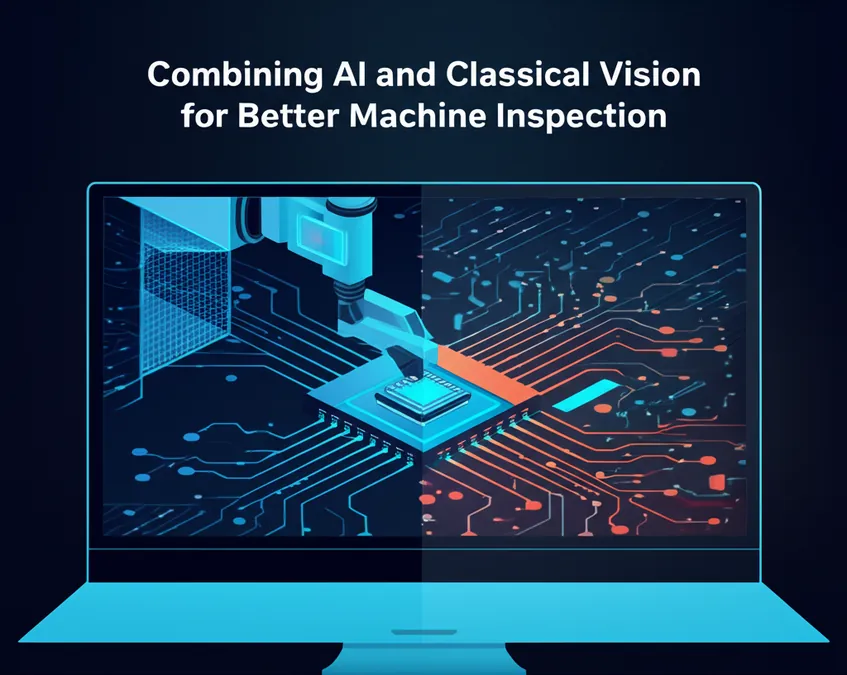How AI is Reshaping the Future of Cardiac Imaging

As cardiovascular medicine charges into the digital age, artificial intelligence (AI) is transforming cardiac imaging at a breathtaking pace. This evolution presents both incredible opportunities and significant challenges that are set to redefine the careers of emerging cardiologists. For those currently in training, understanding and adapting to these changes is a crucial professional journey.
Recent breakthroughs in deep learning have produced algorithms with capabilities that can rival, or even surpass, human experts in specific imaging tasks. From automated analysis of ventricular function to coronary calcium scoring, AI tools are becoming a standard part of daily clinical workflows. Today's cardiology fellows are at the crossroads of traditional medical training and a technological revolution that will fundamentally alter their practice.
The AI Revolution in Cardiac Imaging
There are now over 600 clinical AI algorithms approved by the U.S. Food and Drug Administration, and a notable 10% of them are focused on cardiovascular applications. This highlights the immense potential for AI to enhance patient care. Machine learning, especially through deep neural networks, has achieved remarkable success across multiple imaging modalities.
In echocardiography, AI algorithms are now capable of performing chamber quantification, strain analysis, and valve assessments with an accuracy on par with seasoned sonographers. A 2023 study confirmed that deep learning models could measure LVEF with correlation coefficients greater than 0.92 when compared to expert analysis. Similar progress is being made in automated view recognition and quality control.
For cardiac MRI, AI has moved beyond simple segmentation to handle complex tissue characterization and prognostic evaluations. These tools can slash analysis time from several minutes to mere seconds, boosting workflow efficiency and potentially increasing access to advanced imaging in underserved areas.
In cardiac CT, AI is refining automated coronary calcium scoring, plaque analysis, and stenosis assessment. A multicenter validation study from early 2024 showed an AI algorithm could pinpoint high-risk plaques with over 90% sensitivity and specificity, which could revolutionize risk-stratification for coronary artery disease.
Nuclear cardiology has also benefited from AI, which is improving image reconstruction and interpretation while allowing for more efficient protocols that reduce radiation exposure for patients.
Seizing Opportunities as an Early Career Cardiologist
Perhaps the greatest opportunity for current trainees is to develop expertise that merges traditional image interpretation with AI methodologies.

Cardiologists who can navigate both the clinical subtleties and the technical underpinnings of AI will become the next leaders in the field. The area is also full of research opportunities where meaningful contributions can be made without the need for massive, expensive trials. Productive research paths include:
- Validating AI algorithms against expert interpretation in diverse patient groups.
- Studying the impact of AI on clinical workflows and patient outcomes.
- Developing new AI applications to solve unmet clinical needs.
- Critically evaluating algorithms for fairness, generalizability, and equity.
Many academic centers are actively recruiting early career investigators for these initiatives, providing chances for publication and professional growth.
Furthermore, as AI tools are adopted, there is a growing need for physicians to lead quality improvement efforts. This involves creating usage criteria, monitoring algorithm performance, and developing protocols for when AI and human interpretations differ. In an increasingly competitive job market, expertise in AI applications can be a significant differentiator for both academic and private practice career paths.
Navigating the Challenges of AI Integration
The "Black Box" Problem Many AI models function as "black boxes," providing answers without clear reasoning. This opacity makes it challenging to build clinical trust. It is essential to develop a habit of critically assessing AI outputs rather than blindly accepting them, especially in patient populations underrepresented in the training data.
Maintaining Core Skills With AI automating routine tasks, there's a risk that trainees could become overly dependent on these tools, letting their fundamental interpretive skills weaken. The goal should be to use AI to augment, not replace, human expertise. Deliberate practice of manual interpretation alongside AI-assisted workflows is key to maintaining a strong clinical foundation.
Data Quality and Algorithmic Bias An AI algorithm is only as reliable as its training data. Biased data can lead to biased algorithms that may worsen health care disparities. It is crucial to critically evaluate the diversity of training datasets and advocate for equitable algorithm development.
Regulatory and Ethical Hurdles The regulatory landscape for medical AI is still evolving. Key issues like liability, reimbursement, and oversight are not fully resolved. Similarly, ethical questions surrounding patient consent and data privacy require continuous discussion. Staying informed about new frameworks, like the EU Artificial Intelligence Act, is vital.
Your Roadmap for Professional Development
To prepare for this future, cardiologists should pursue both formal and informal education. Key resources include the ACC's AI Resource Center, specialized conferences, and online courses in programming and machine learning.
Finding mentors who are active at the intersection of cardiology and AI is also invaluable. These relationships can provide unique perspectives and collaboration opportunities. Finally, nothing beats direct, hands-on experience. Participating in institutional pilots of new AI software or contributing to validation studies provides practical understanding that theoretical learning alone cannot offer.
The Future is a Partnership: Cardiologists and AI
Instead of seeing AI as a threat or a magic bullet, it's best to view it as a powerful partner that augments human capabilities. The cardiologist of the future will work alongside AI systems, with each complementing the other's strengths.
For today's cardiology fellows, AI in imaging is a transformative force. By developing expertise in both traditional clinical skills and AI methodology, the next generation can ensure these powerful new tools are used to genuinely advance patient care and lead the field forward.


